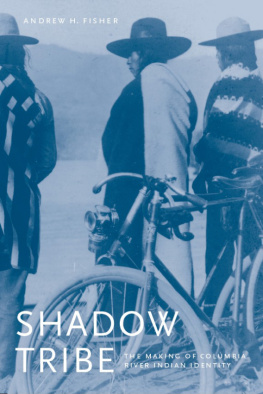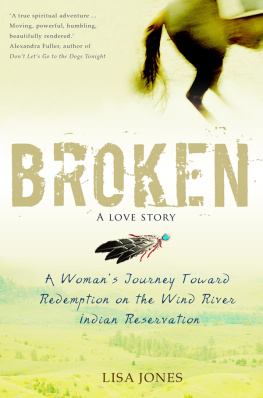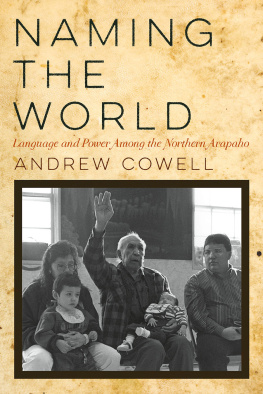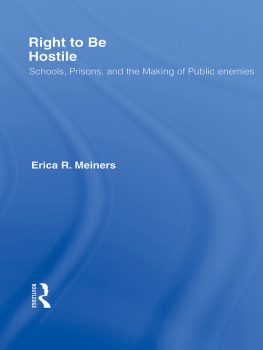
Taking readers through the rocky terrain of state and federal government politics on matters of Indians in general and those specifically related to the Northern Arapahos on the Wind River Reservation, Martha Hipp masterfully blends historical and personal accounts of Arapahos who, though scarred by Anglocentric government policies, persevered to assert their sovereignty in establishing their schools.
Neyooxet Greymorning, professor of anthropology and Native American studies at the University of Montana
I am reminded of the struggles, obstacles, barriers, and economic racism that the founders of Wyoming Indian High School endured; this only made them more determined to achieve their goal to establish a public high school. The grassroots effort of the Native community followed its own path to self-determination at Wind River.
W. Patrick Goggles, former Wyoming state representative and former chairman of the Wyoming Indian School Board

Sovereign Schools
How Shoshones and Arapahos Created a High School on the Wind River Reservation
Martha Louise Hipp
University of Nebraska Press | Lincoln
2019 by the Board of Regents of the University of Nebraska
Cover designed by University of Nebraska Press.
All rights reserved
Library of Congress Cataloging-in-Publication Data
Names: Hipp, Martha Louise, author.
Title: Sovereign schools: how Shoshones and Arapahos created a high school on the Wind River Reservation / Martha Louise Hipp.
Description: Lincoln: University of Nebraska Press, [2019] | Includes bibliographical references and index.
Identifiers: LCCN 2018025843
ISBN 9781496208859 (cloth: alk. paper)
ISBN 9781496213624 (epub)
ISBN 9781496213631 (mobi)
ISBN 9781496213648 (pdf)
Subjects: LCSH : Wyoming Indian High SchoolHistory20th century. | Arapaho IndiansEducation (Secondary)WyomingWind River Indian ReservationHistory. | Shoshoni IndiansEducation (Secondary)WyomingWind River Indian ReservationHistory. | Wind River Indian Reservation (Wyo.)
Classification: LCC E 97.6. W 9+ | DDC 371.215/08997354078763dc23
LC record available at https://lccn.loc.gov/2018025843
The publisher does not have any control over and does not assume any responsibility for author or third-party websites or their content.
Contents
Native Americans began a movement for control of their schools in the mid-1960s. This book is about that movement with a focus on the epic struggle of the Wind River Indian Reservation people to establish their public school. Their story is a microcosm of the complex social and political circumstances that begged change; a courageous few faced and acted to overcome barriers of prejudice, economic deprivation, and discrimination that had been in place for more than one hundred years.
My work to record this history began in November 2000 as a winter storm brought darkness early; its winds were blowing sparse snow and sleet straight across the barren ground. All the same, a small group of Elders, Indian and non-Indian, gathered in the semi-darkness to meet with me at the old Choke Cherry Caf, not far from the reservation school where I worked. I was first on the short agenda and so knew that they were waiting for me to speak when it grew quiet; I explained that I had come to ask for suggestions for a required school and tribal community research project. Elder Gerald Sage (19382012) responded after another quiet wait; he said the history of the Wyoming Indian High School was an interesting oneone that I could help preserve. The other Elders agreed.
I agreed to do my part without realizing the enormity of what I had taken on. I feel that I owe anthropologists an apology for getting into their field with so little appreciation of their knowledge and work. It can no longer be said that I lack that appreciation. This project has taken eighteen years. I have read many books, articles, legal documents, and minutes of meetings and most important, I have taken the care and time needed to piece together newspaper stories and the academic work of historians and anthropologists with what the Elders told me. Local museum photographs and the remnants of the old boarding schools confirmed their existence, as did the heartache that remained of their trauma. I took the word of the Elders; it was internally consistent (with emotion and story line), and they were consistent with one another and with other evidence including that from other Native American areas and sources.
Interviewees recommended one another for their experience and interest and were not scientifically selected. I usually simply took notes but sometimes used tape recordings; those were transcribed by Barbara Sage (see below). Helsha Acua, professor of Native American studies at Central Wyoming College, provided training sessions about how to prepare for the interviews. I used some of my own training as a psychologist to be an intense listener.
Many questions and concepts for this study were not formulated ahead of time. Rather, as I researched the basic facts of Wind River and local town educational history I learned of several areas in need of further study. I had not known, for example, the extent of prejudice and discrimination in this Rocky Mountain region until informed about it by interviewees and newspaper accounts; I had not known the threat that non-Indian education could pose to Indian identity; I had not known that the concept of self-determination included Indian control of Indian schools. These concepts are central to the story.
The concept of self-determination did not mean a rejection of educated Indians, as Indians were called by the Arapahos when they had succeeded in white-run schools. Otherwise, the tribal people on the Wind River Reservation would not have fought so hard and so long for a public school. They recognized the need to be able to deal with the white-dominated world. In fact, that motivation is explicit in the schools mission statement and by the schools icon: the image of Cleaver Warden, one of the most prominent among the Arapaho men educated at the boarding school in Carlisle, Pennsylvania. A Southern Arapaho, Warden served as interpreter to and from non-Indians for the Northern Arapahos (Northern and Southern Arapaho language were the same), which itself was highly important and necessary to Arapaho survival in the early 1900s but also was influential in their political activities (see chapter 6). The Arapahos have long admired Wardens capabilities and strive to see their children gain the power of non-Indian knowledge and to blend it with their own.
I want to thank the many individuals and groups who provided me with this Wind River education. Early support for my work time as psychologist for the Wyoming Indian School District 14 (20002007) to do home visits, interviews, and related activities came from Lonn Hoffman (19582004), superintendent of the Indian schools. He required school-related research by all professional employees. Because of his support and the tribal Elders desire to have the story told, dozens came forward to be interviewed.
The first group I want to thank are the students, teachers, and staff at Wyoming Indian High School, where I came to appreciate Arapaho and Shoshone culture. The names of those who made essential contributions, if not listed here, are given when their part of the history appears in the main text.
Next page









